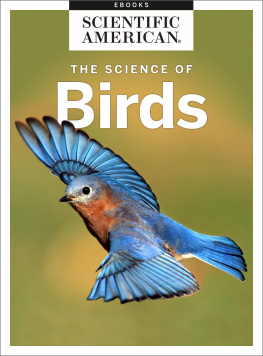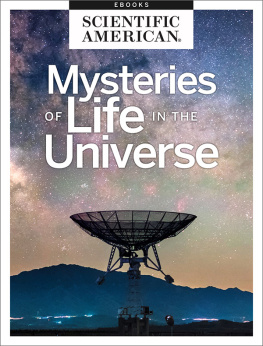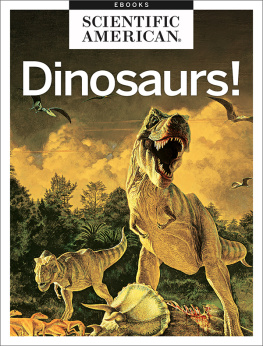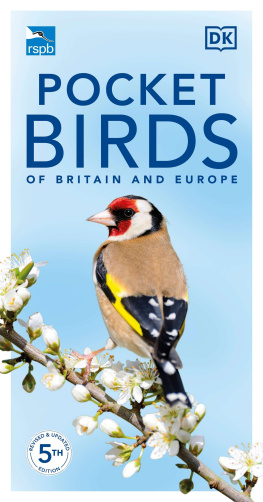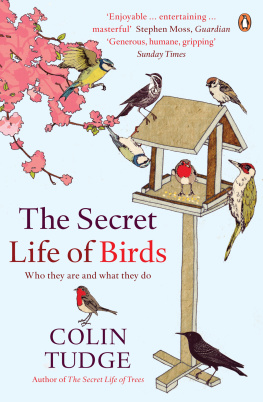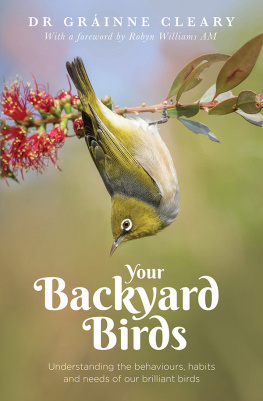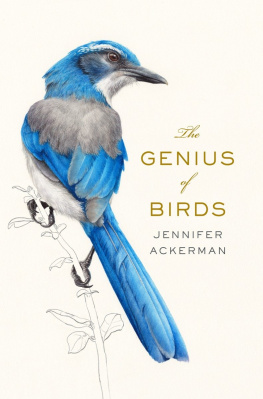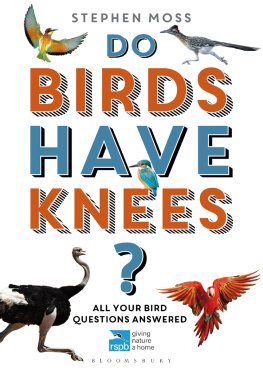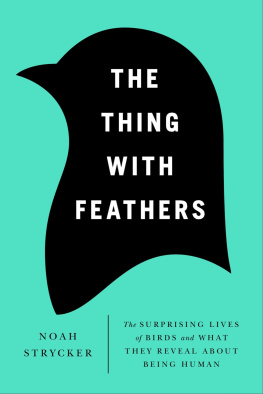The Science of Birds
From the Editors of Scientific American
Cover Image: SteveByland/GettyImages
Letters to the Editor
Scientific American
One New York Plaza
Suite 4600
New York, NY 10004-1562
or editors@sciam.com
Copyright 2021 Scientific American, a division of Springer Nature America, Inc.
Scientific American is a registered trademark of Springer Nature America, Inc.
All rights reserved.
Published by Scientific American
www.scientificamerican.com
ISBN: 978-1-948933-31-5


THE SCIENCE OF BIRDS
From the Editors of Scientific American
Table of Contents
Introduction
by Lisa Pallatroni
Section 1
1.1
by Stephen Brusatte
1.2
by Kate Wong
1.3
by Daniel T. Ksepka & Michael Habib
1.4
by Kate Wong
1.5
by Kate Wong
1.6
by Rachel Nuwer
1.7
by Kat Long
1.8
by Sarah Lewin Fraser
Section 2
2.1
by Bret Stetka
2.2
by Onur Gntrkn
2.3
by Rachel Nuwer
2.4
by Carolynn K-lynn L. Smith & Sarah L. Zielinski
2.5
by Leyre Castro & Ed Wasserman
2.6
by Susanne Bard
Section 3
3.1
by David Rothenberg
3.2
by Karen Hopkin
3.3
by Karen Hopkin
3.4
by Karen Kwon
3.5
by Amy Strauss
3.6
by Jason G. Goldman
Section 4
4.1
by Kate Wong, Jan Willem Tulp & Liz Wahid
4.2
by Joshua Rapp Learn
4.3
by Jason G. Goldman
4.4
by Leila Sloman
4.5
by Jason G. Goldman
4.6
by Drew Higgins
4.7
by Rachel Nuwer
4.8
by Jim Daley
4.9
by Jason G. Goldman
Section 5
5.1
by Susan Cosier
5.2
by Amy Mathews Amos
5.3
by Samuel B. Case
5.4
by Paige Embry
5.5
by Cayte Bosler
5.6
by Priyanka Runwal
Our Fascinating Feathered Friends
This spring, two blue jays built a nest on the fire escape one floor below me. Visible from the bedroom window, they were both fascinating and soothing to watch. After the eggs hatched, I got to witness the baby jays feeding and growing and learning to fly for about three weeks until they left the nest. Its easy to understand why so many people are passionate birders. The more you watch and learn about birds, the more captivating they are, and in this eBook, we examine what we know about bird evolution, their intelligence, communication, migration and behavior.
Birds are the surviving lineage of dinosaurs. In Section One, Stephen Brusatte takes us through how the dinosaurbird case was built and the evidence that bird traits evolved piecemeal over thousands of years, rather than in an evolutionary burst. Adding to that evidence, Kate Wong reports on a recent study of bird skulls that shows after the extinction event, bird evolution slowed down compared to dinosaur predecessors. We also look at the origin of bird egg colors and evidence that bird nests used to look more like a dome than a bowl.
In Section Two, Bret Stetka reviews two 2020 papers that show bird brains are more similar to the human brain than previously thought. For years it was assumed that the avian brain was limited because it lacked a neocortex, but new findings show that birds have a brain structure that is comparable to the neocortex despite having a different shape. One the study authors, Onur Gntrkn, expands on this in The Surprising Power of the Avian Mind. Carolynn K-lynn L. Smith and Sarah L. Zielinski illustrate that chickens are capable of empathy, which has many ethical implications for the treatment of farmed birds.
Birdsong reflects complexity in communication and composition. Philosopher and musician David Rothenberg and his colleagues used the tools of biology, music and neuroscience to delve into mockingbird songs. They argue that the mockingbird uses musical techniques familiar to composers from many kinds of human music. Birds also practice deception in communication when needed: Jason G. Goldman reports that thornbills cry wolf to deceive predators and Karen Hopkin tells us lyrebirds lie for sex. Jason G. Goldman also reports that flamigos lead complex social lives, choosing who to associate with.
Banding birds for research, a practice begun in 1902, can show changes in bird populations, behaviors and environments over time. In 100 Years of Bird Banding, we look at how the data illuminates the secret lives of birds. The South Polar skua, for example, is capable of travelling from Shortcut Island, Antarctica to Greenland, 8,929 miles away. The Peregrine falcon a notorious predator is also a scavenger.
Banding can also can inform decisions about how to protect the birds and their habitats, as happened with the whooping crane, a shining success story to come out of banding work. Section Five examines conservation efforts and the ecological implications. Of the many dangers facing migratory birds, Paige Embry writes of the disappearance of floating mudflats, an essential food refueling station during long flights. Cayte Bosler reports on programs in Guatemala trying to preserve the mudflats and advise farmers on small tweaks to help both the birds and the ecosystem. Priyanka Runwal describes other efforts to create artificial roosting stations using floating island of oyster farm bags.
Whatever your level of interest, whether its casual observation, a budding hobby or a lifelong passion, we hope that this collection helps increase your knowledge and enjoyment birds.
Lisa Pallatroni
eBook Editor
Taking Wing
by Stephen Brusatte
At about six o'clock in the morning, long before light brokeon a cold November day in 2014, I pushed through the Beijingstation and fought my way onto a crowded train. I washeaded for Jinzhou, a Chicago-sized city in the northeasternfringes of China. I tried to steal back some sleep as wecrawled past concrete factories and hazy cornfields, but Iwas too excited to nod off. Something rumored to be incrediblewas waiting for me at my destinationa mysterious fossil that a farmer had stumbledon while harvesting his crops.
Four hours later I stepped onto the platform in Jinzhou,trailing behind my colleague Junchang L, a famous dinosaurhunter at the Chinese Academy of Geological Sciences in Beijingwho had asked for my help in studying the fossil. A smallband of local dignitaries greeted us and whisked us away to thecitys museum, a rickety building on the outskirts of town. Withthe seriousness of a high-level political summit, our party proceededdown a long hallway and into a side room where a slabof rock perched on a small table. It was then that I found myselfface-to-face with one of the most beautiful fossils I had everseen: a skeleton about the size of a donkey, its chocolate-brownbones contrasting with the surrounding gray limestone.
Clearly a dinosaur, the creature had steak knife teeth, pointyclaws and a long tail that left no doubt that it was a close cousinof Jurassic Parks villainous Velociraptor. Yet the Chinese specimendiffered from such ordinary dinosaurs in important ways.Its bones were light and hollow, its legs long and skinny like aherons, and its body covered with assorted types of feathers, including big quill pens on the arms, stacked over one another toform wings. This dinosaur bore a striking resemblance to a bird.
About a year later L and I described this skeleton as a newspecies, which we called

